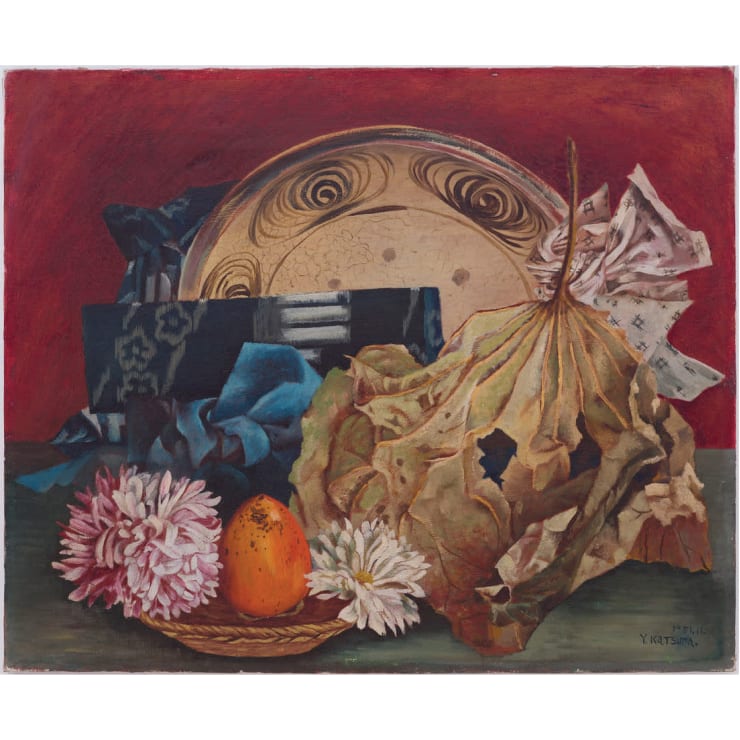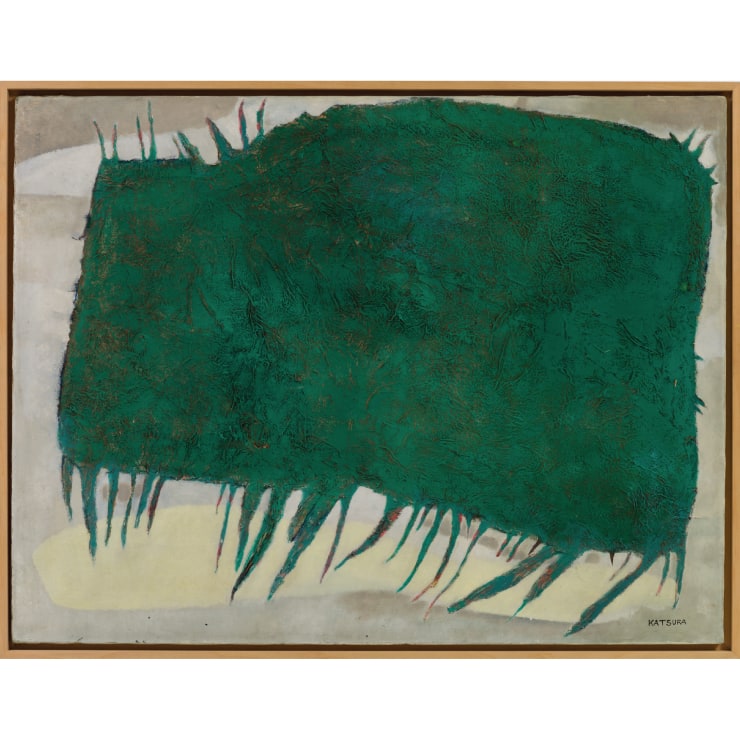Alison Bradley Projects is delighted to announce that two iconic paintings by Yuki Katsura (b. 1913-1991, Tokyo), Still Life (静物, 1951) and Work (作品, 1961), have been acquired by the San Francisco Museum of Modern Art (SFMOMA).
Yuki Katsura painted Still Life in 1951, a year of dramatic change in Japan—the San Francisco Peace Treaty was signed two months before she created Still Life, ending the U.S. occupation and re-establishing peaceful relations between the two nations. The artist skillfully subverted national symbols of Japan in this iconic oil painting, including the tangled petals of chrysanthemum flowers, upside-down persimmon, crumpled lotus leaf, agrarian kasuri textiles, and a mingei plate with the famous uma no me (horse’s eye) pattern. Taken together, the depth of symbolism in Still Life reveals a stunning allegory of national decay that demonstrates the artist’s deep engagement with life, death, and politics in postwar Japan.
While the delicate subtlety of Still Life appears in contrast to her more overtly political paintings of the early 1950s, the selection of symbols deliberately rendered in western-style still life demonstrates Katsura's acute awareness of the precarity of the Japanese nation in those early postwar years. The meticulous attention to detail in Still Life is representative both of her early studies of kachōga (bird-and-flower painting), as well as her extensive training in yōga (western-style painting) under prominent modernist Seiji Tōgō and surrealist Tsuguharu Foujita.
Painted a decade later in 1961, Work is one of the striking paintings Yuki Katsura created during her three-year period of living and working in New York City. In 1956, at the height of her career in Japan, Katsura decided to leave Tokyo for Europe, Africa, and the United States to continue expanding her practice as an “unknown” artist abroad. She spent two years exploring, sketching, and exhibiting in Europe with Paris as her base, then lived in the village of Bambari in the Central African Republic for three months, before finally setting up her studio in New York City in 1958. In New York, Katsura experimented extensively with color and materiality, using handmade Japanese washi paper to create textural paintings with large shapes that she called “forms.” This body of work is often referred to as Katsura’s experiments with Abstract Expressionism.
Work offers viewers a window to observe the progression of Katsura’s experimentation—her deliberate emphasis on the torn edges and disintegrating fiber of the washi paper brings the abstracted form to life with dynamic, whimsical “legs.” The green form in Work thus demonstrates that Katsura may not have shifted to pure abstraction, pointing to a continuity of practice throughout her six-decade career.


